Is the Ethiopian coffee bean roasted lightly? Yega Chuefei Fruit Ding Ding Coffee Bean Flavor Story Source
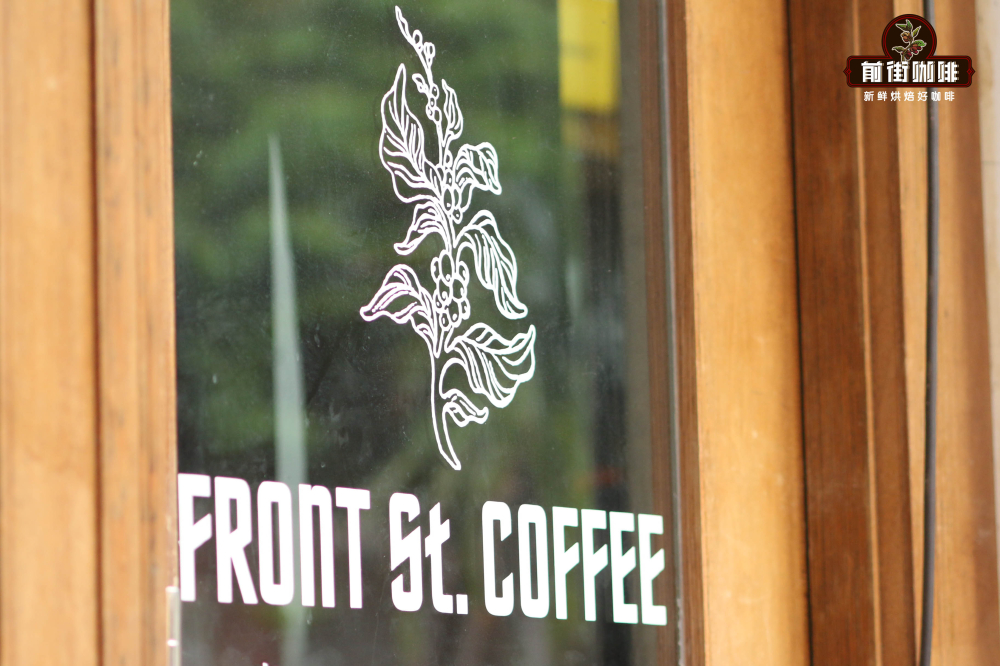
Professional coffee knowledge exchange more coffee bean information please follow the coffee workshop (Wechat official account cafe_style)
As we all know, Ethiopian coffee is mainly sour, but Ethiopia is as large as Ethiopia, and there are differences in subdivided producing areas. Qianjie's current rations bean series, there is a Yega Chuefei coffee beans, in a cost-effective way to experience the flavor and tonality of this large producing area: citrus lemon clear and bright acidity, delicate and elegant flower and fruit aroma. Of course, the characteristics of each small producing area or cooperative can also be found by subdividing the producing areas of Yega Xuefei. Today, Qianjie is here to introduce this coffee bean produced by the Yega Sheffield Guoding Cooperative, which not only has the main flavor and tonality of the Yega Sheffield producing area, but also has a more tea taste, which tastes like lemon tea.
Yega Xuefei Guoding Cooperative
Producing area: Yega Xuefei Gedeo Zone producing area
Altitude: 1900-2300m
Variety: original species (Heirloom)
Treatment: washing
Grade: G1
Flavor: citrus, green tea, flower fragrance, honey
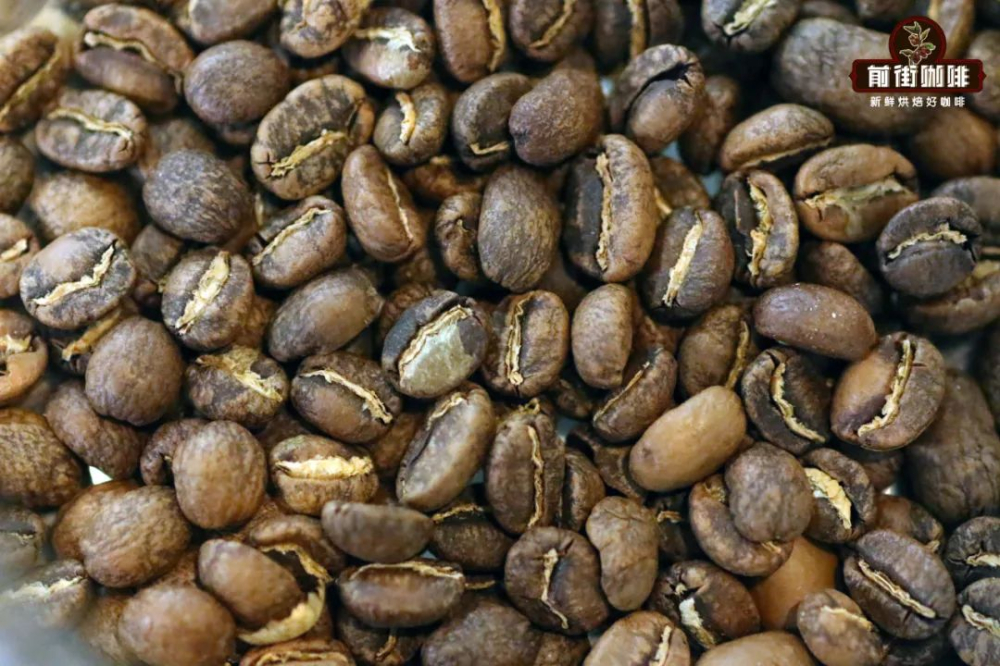
Yejia Xuefei coffee producing area
Yejasuefi has always been one of the most important coffee producing areas in Ethiopia. It once belonged to the Sidamo coffee producing area, and later became an independent coffee producing area because of its unique flavor. It can be said that Yejashafi is not only a name of coffee producing area, but also a term for the description of specific coffee flavor. Yejia Xuefei coffee producing area is a high altitude coffee producing area, which is about 2000 meters above sea level. There are more than 40 cooperatives in the Yejashafi coffee producing area, which mainly manage coffee cultivation in a family business model.

There are also many well-known micro-producing areas under the Yega Sheffield Coffee area, such as Cochel, Fog Valley, Godibe and so on. These micro-producing areas have excellent cooperatives, and the Yega Xuefei coffee beans have their own unique flavor characteristics.
Guo Tintin was originally a member of the Waka Cooperative, but it was later discovered by coffee hunters and became independent. The coffee beans produced by Fruit Ding Ding are of very high quality, and you can clearly feel the very rich aroma of jasmine, elegant citrus and honey tea in the coffee.
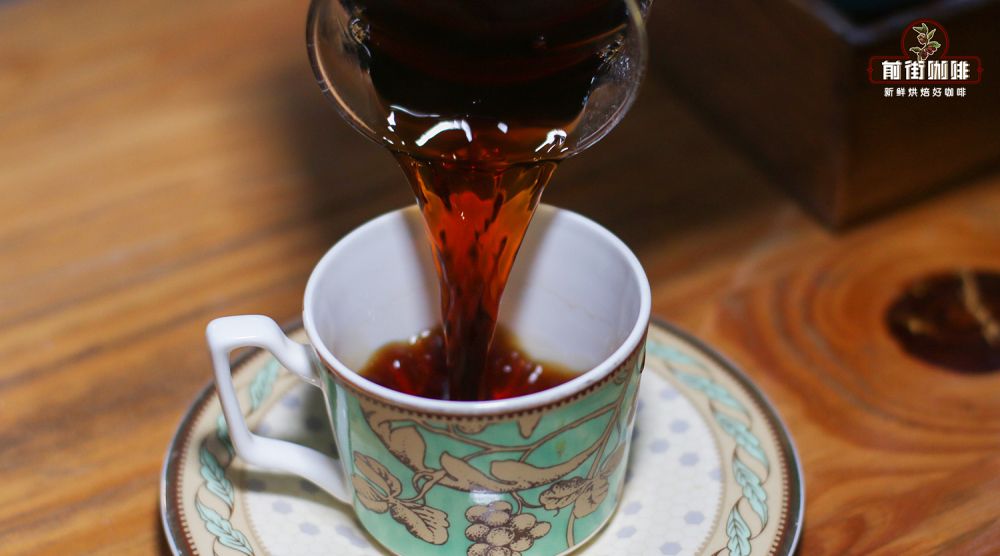
Coffee grade
Yejia Xuefei coffee variety is a local native species, small granule species, the appearance is more round, the bean body is very small, mostly between 14 and 15 orders. The grading system for Ethiopian coffee beans by ECX, the Ethiopian Commodity Exchange Ethiopian Commodity Exchange, established in 2012, is twofold.
On the one hand, the defect rate of coffee beans is graded. For every 300g of raw beans exported, the defective beans are less than 3, and the grade is G1. For every 300g of exported raw beans, there are 4-12 defective beans with a grade of G2.
This fruit and diced coffee bean belongs to the G1 grade.
Coffee variety
Ethiopian coffee is the birthplace of Arabica coffee, so there are thousands of kinds of coffee here. As the coffee trees are native, they have a very obvious flavor of the place of origin.
Therefore, Ethiopia will use Heirloom to summarize so many varieties of coffee.

Baking suggestion
Qianjie takes into account that the fruit acidity of this bean is the main representative of the flavor, more suitable for shallow baking, will highlight the clean taste, bright acidity, and sweet obvious.
After determining the general direction of baking, Qianjie established three different baking curves, and then selected the curve with excellent and stable flavor for mass production.
Roaster Yang family 800N 550g raw beans
[curve one]
Enter the bean temperature: 180 ℃, turn yellow point: 5 times 39 percent 00 ", 151.9 ℃, one burst point: 8 percent 39 percent 30", 184.1 ℃, develop 2 percent 39 percent 08 "after one explosion, 194 ℃ out.
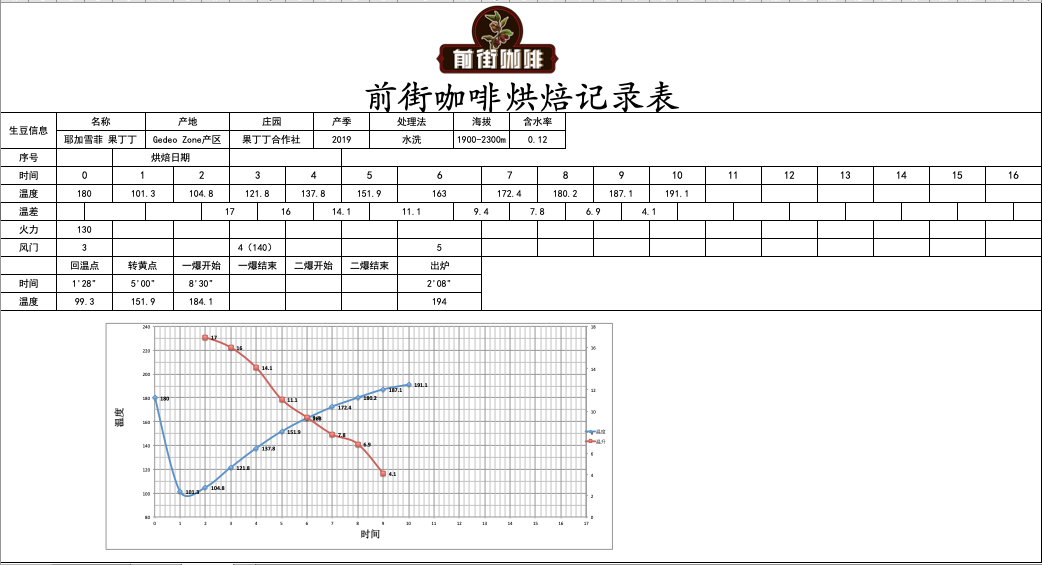
[curve two]
Enter the bean temperature: 180 ℃, turn yellow point: 5 times 39 percent 00 ", 149.9 ℃, one burst point: 8 percent 39 percent 42", 183.8 ℃, develop 1 percent 39 percent 48 "after one explosion, 193.5 ℃ out.
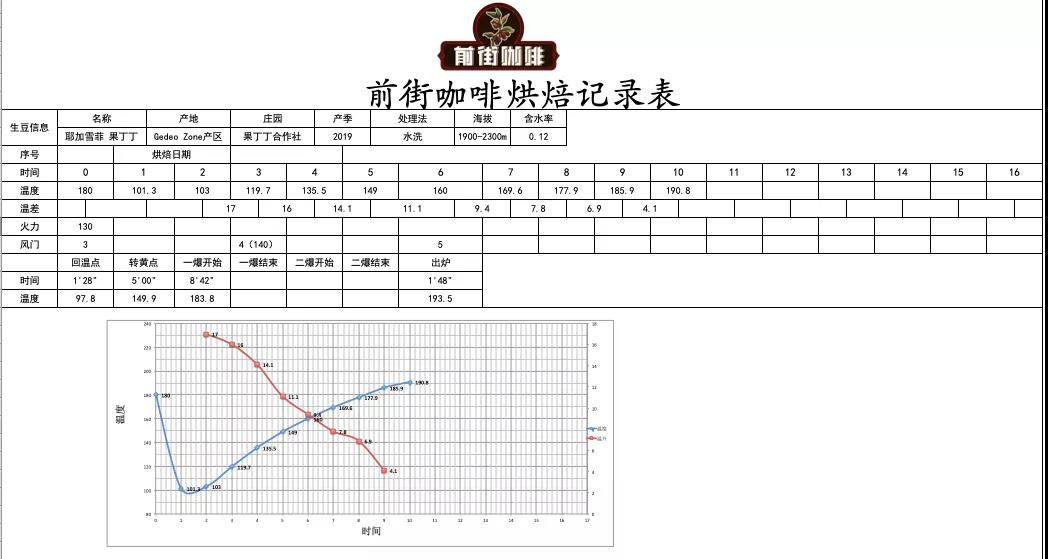
[curve 3]
Enter the bean temperature: 180 ℃, turn yellow point: 5 times 39 ℃ 10 ", 151.1 ℃, one burst point: 8 percent 39 percent 46", 184.5 ℃, develop 1 percent 39 percent 28 "after one explosion, 192.3 ℃ out.
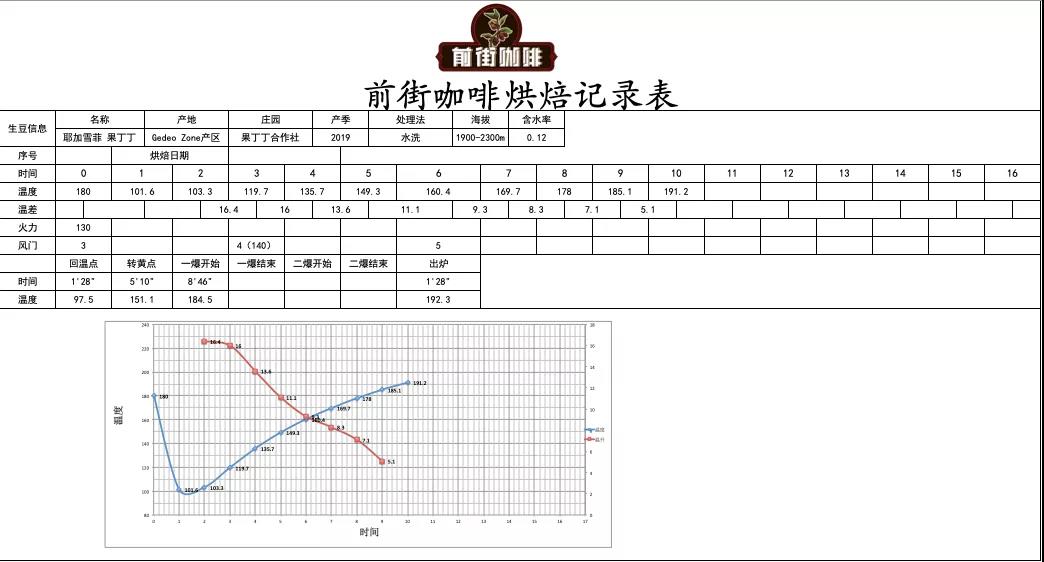
Test the flavor by cup
[curve one]
Dried incense: citrus, honey
Wet fragrance: flower scent, caramel
Entrance: smoke, citrus, sipping flowers, caramel, honey with the change of temperature, and creamy finish.
[curve two]
Dry fragrance: citrus, lemon
Wet fragrance: flower fragrance, berries, caramel
Entrance: citrus, cream, with the change of temperature, sipping berries, black tea, caramel sweet, aftertaste of citrus
[curve 3]
Dried incense: citrus, caramel
Wet fragrance: caramel, faint scent of flowers
Entrance: Wood, citrus, sipping caramel, cream and astringency at the end with the change of temperature.
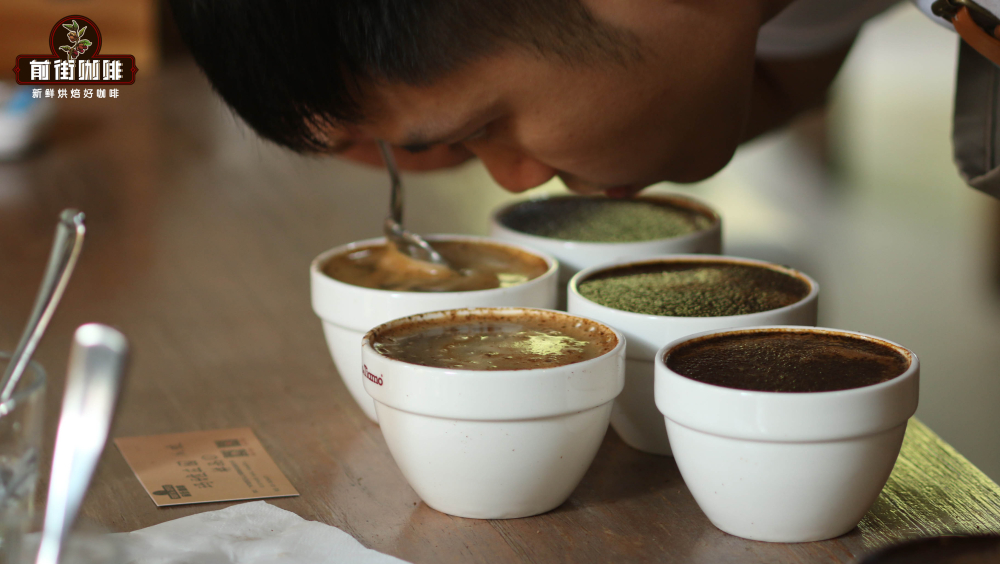
Cooking suggestion
After passing the cup test in Qianjie, we can basically determine the choice of curve two, but it is not over yet. In order to further determine the flavor, we have to cook again. Because eight hours after baking, the cup test was carried out in Qianjie, and the coffee beans are still fresh and need to be kept for another three or four days. When the gas in the beans is about the same, they can be brewed.
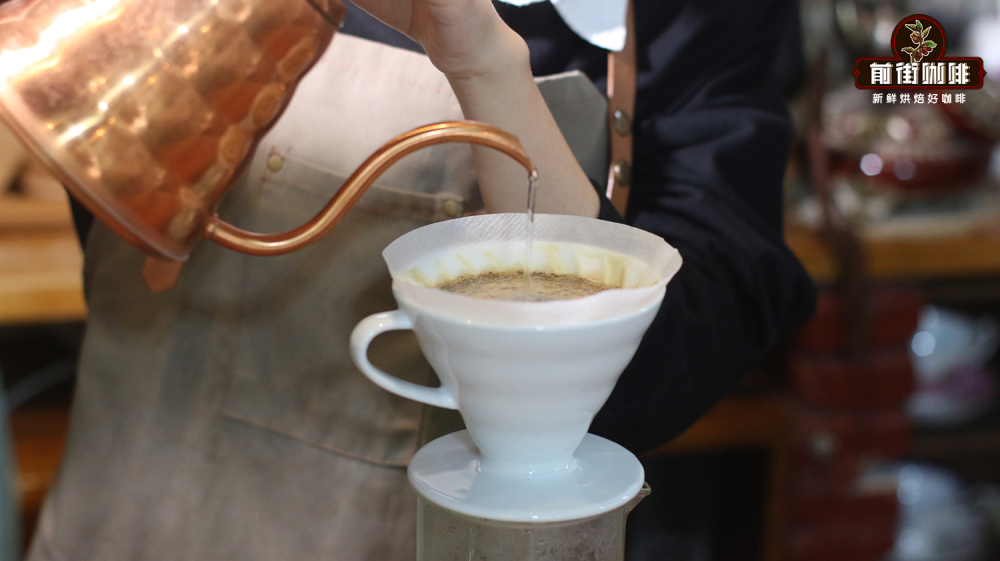
In order to fully extract the acid properties of Yejiaxuefei, Qianjie uses higher water temperature and finer grinding degree for extraction, but in order to avoid over-extraction caused by high temperature, faster flow rate filter cups such as V60 filter cups will be used.
The V60 filter cup is in a 60 °cone shape, and the tapered angle allows the coffee powder to be distributed centrally, and when water is injected, the water can automatically converge to the center of the filter cup to ensure that the contact time between the water and the coffee powder is sufficient, so that the appropriate coffee liquid can be extracted.
In addition, the ribs on the inside of the body of the V60 filter cup extend clockwise from the bottom to the top, so that there is enough space between the filter paper and the filter cup, so that the flow of water is good. Coupled with the large holes in the bottom, the flow velocity is relatively faster than that of many filter cups.
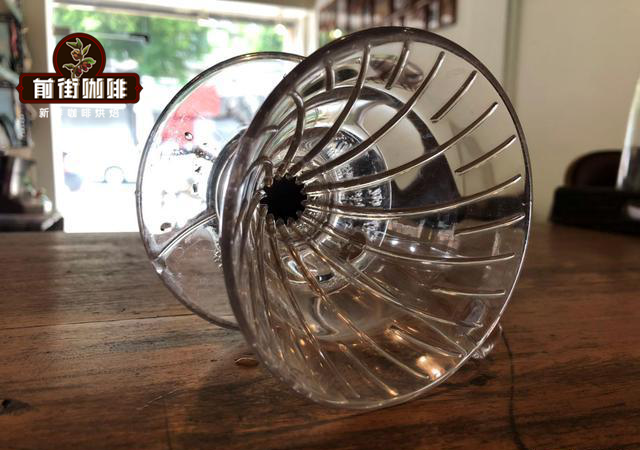
The specific brewing parameters of Qianjie coffee are: V60 filter cup, water temperature 90 ℃, water powder ratio 1:15, powder quantity 15g, grindness BG#5F (China 20 standard sieve pass rate 80%)
Qianjie coffee is extracted by stages, the amount of steaming water is twice as much as that of coffee powder, that is, 30 grams of water is steamed for 30 seconds, the small flow is injected around to 125 grams, and the water level is about to be exposed when the powder bed is about to be exposed, continue to inject water to 225 grams to stop, the whole extraction time is 2 minutes.
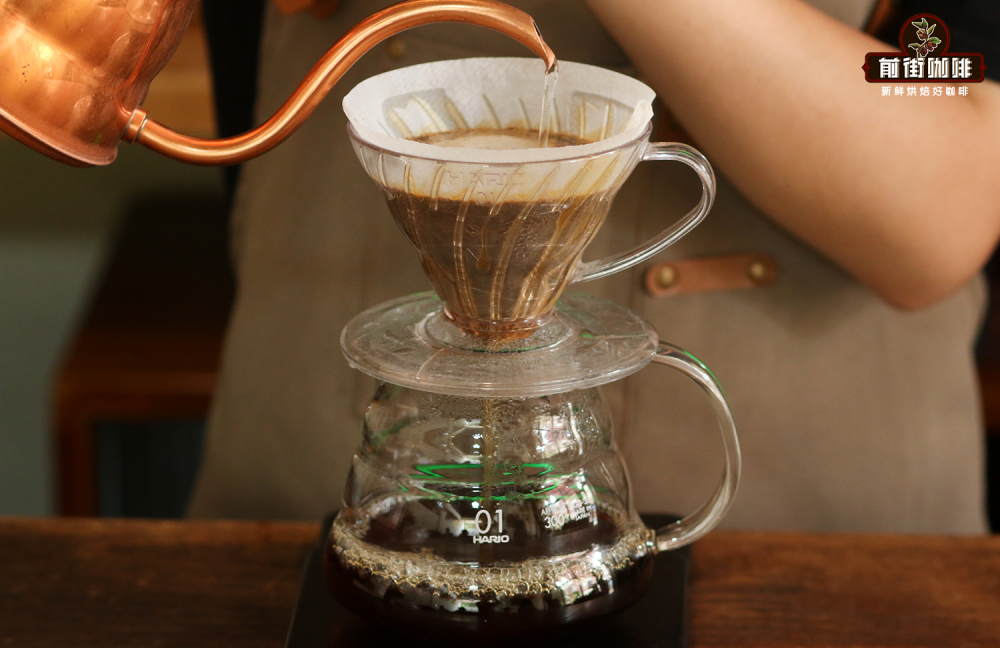
Flavor description
The entrance has citrus, black tea, with the change of temperature, cream, caramel, almond aftertaste is obvious and taste clean and sweet. The flavor of Yega Xuefei fruit changed at different temperatures.
Qianjie mentioned the use of higher water temperature to cook fruit dingding in order to extract its acidity as much as possible. But on the front street, a guest asked, how high is the temperature of the water? According to the recommendations of SCA American Fine Coffee Association, the water temperature should be controlled at 85-94 ℃, the suitable water temperature for light-roasted beans should be 90-94 ℃, and that for deep-baked beans should be 85-89 ℃.
Qianjie in order to make people more intuitively understand the effect of this temperature on the flavor of coffee, take Yega Xuefei fruit Ding Ding as an example, using four different water temperatures to verify what kind of flavor experience it will have.
Cooking parameters (try to be consistent), except for water temperature, other parameters are consistent: V60 filter cup, 15g powder, powder / water ratio at 1:15, grindness is BG#5F (China 20 standard sieve pass rate of 80%)
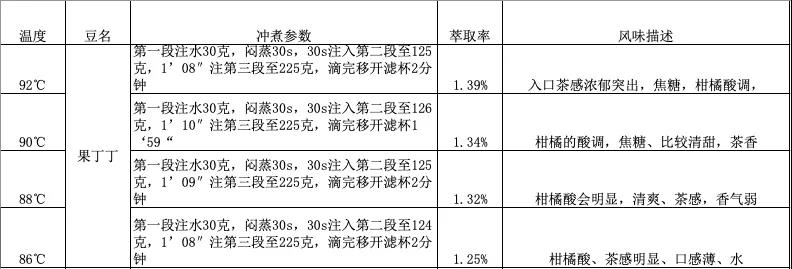
Through the cooking data, we can see that the light-baked fruit is more suitable to be cooked at the water temperature of 90-92 ℃, which can show the sour and sweet taste of the fruit, which accords with the flavor of the fruit.
The use of 86-88 ℃ of water temperature, can obviously feel the outstanding acid quality of beans, but lack of aroma, taste will appear thin, water and so on. The light-roasted coffee retains more flavor of the coffee. At this roasting degree, beans tend to be rich in flower aroma and fruit acid, and the flavor is more layered. Using a slightly higher water temperature can better highlight the flavor characteristics of "Yejia Xuefei Dingding".
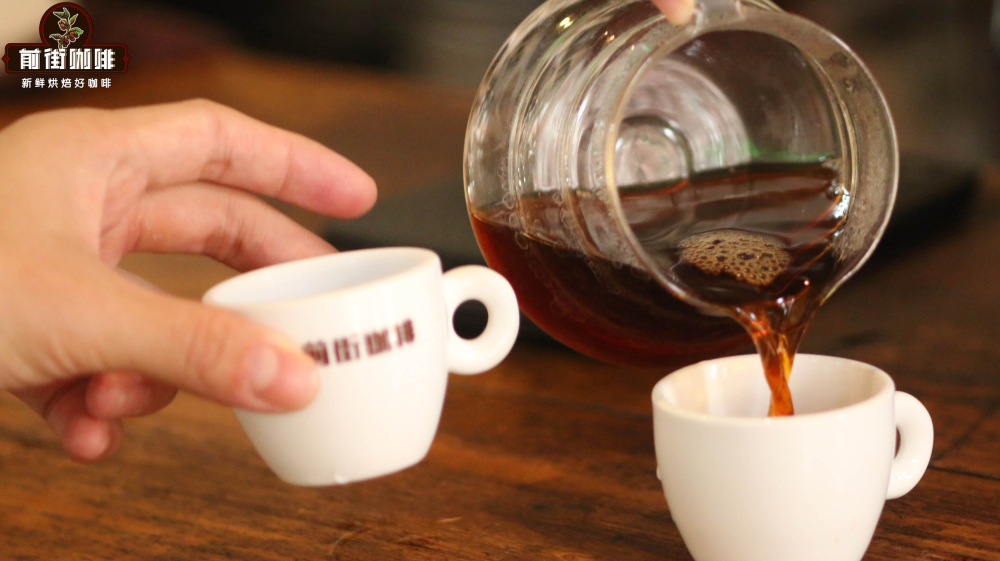
For more boutique coffee beans, please add private Qianjie coffee on Wechat. WeChat account: kaixinguoguo0925
Important Notice :
前街咖啡 FrontStreet Coffee has moved to new addredd:
FrontStreet Coffee Address: 315,Donghua East Road,GuangZhou
Tel:020 38364473
- Prev
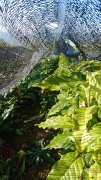
Yega Xuefei's cheap and delicious Coffee description of the Flavor of Solar Dumeso G1 Raw beans
For the exchange of professional baristas, please follow the coffee workshop (Wechat official account cafe_style) Ethiopia Sun Yega Xuefei Dumeso G1 Ethiopia Natural Yirgacheffe Dumerso Coop. G1 there are many kinds of Ethiopian coffee, whether it is ECX, YCFCU, or small farmers introduced by raw bean merchants, they will inevitably step on mines or have poor quality.
- Next
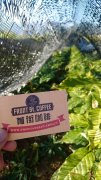
The unique flavor of Kenyan coffee Kangunu AA TOP introduces the coffee snapped up by well-known roasters
Professional baristas please follow the coffee workshop (Wechat official account cafe_style) Kenya Congunu AA TOP Kenya Kangunu AA TOP has previously heard that this Kenyan flavor is quite good, different from the traditional black plum, or dark berry flavor, Kangunu has a very different performance. The Barn, a well-known bakery in Berlin, has also bought this bean. A few days ago and Taiwan
Related
- Detailed explanation of Jadeite planting Land in Panamanian Jadeite Manor introduction to the grading system of Jadeite competitive bidding, Red bid, Green bid and Rose Summer
- Story of Coffee planting in Brenka region of Costa Rica Stonehenge Manor anaerobic heavy honey treatment of flavor mouth
- What's on the barrel of Blue Mountain Coffee beans?
- Can American coffee also pull flowers? How to use hot American style to pull out a good-looking pattern?
- Can you make a cold extract with coffee beans? What is the right proportion for cold-extracted coffee formula?
- Indonesian PWN Gold Mandrine Coffee Origin Features Flavor How to Chong? Mandolin coffee is American.
- A brief introduction to the flavor characteristics of Brazilian yellow bourbon coffee beans
- What is the effect of different water quality on the flavor of cold-extracted coffee? What kind of water is best for brewing coffee?
- Why do you think of Rose Summer whenever you mention Panamanian coffee?
- Introduction to the characteristics of authentic blue mountain coffee bean producing areas? What is the CIB Coffee Authority in Jamaica?

